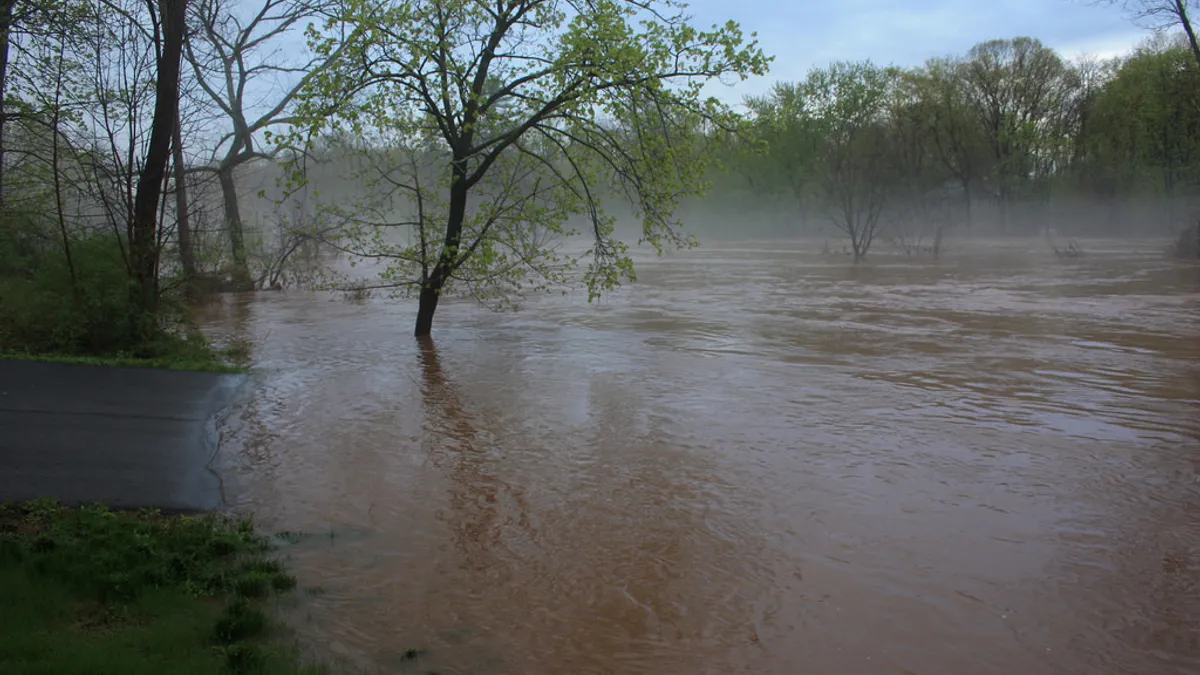Dive Brief:
- A recent FM Global white paper recommends businesses and property owners prepare for intense localized rain or drought conditions that could disrupt the supply chain through flooding or wildfires.
- As the climate continues to change, experts anticipate that certain parts of the United States will see more intense precipitation with higher flooding risks, or prolonged droughts with wildfires.
- Business owners may lack a sense of urgency to plan for extreme precipitation, but a single extreme weather event can have ramifications throughout the global supply chain. Supply chain managers should consider the risks facing partners and develop a resilience plan for extreme weather.
Dive Insight:
Businesses need to consider whether their suppliers sit in flood-prone areas and take steps to protect their supply chains, FM Global research manager Louis A. Gritzo told Supply Chain Quarterly. While 90 percent of companies operate in flood-exposed regions, he said, more than 60 percent surveyed said they’re not well-prepared for a flood.
A 2012 Federal Highway Administration study estimated that weather-related delays cost the U.S. trucking industry $8 billion to $9 billion a year. A recent follow-up study involved a more detailed regional analysis and found that in 13 diverse geographic corridors, including Atlanta’s I-285 Beltway, I-80 in the Lake Tahoe region and I-78 in Newark, NJ, weather delays cost the freight industry $3.8 million annually.
“These findings support the earlier estimates and—by examining 13 regions in the United States that vary in terms of their weather, population size, and economies—this report demonstrates how these national trends impact individual regions,” the FHWA report says.
Supply chain managers can take several steps to minimize their exposure to flooding risk, FM Global Vice President and Research Manager told Supply Chain Quarterly. Mainly, it involves divesting from flood zones but could also include proactively diversifying the geographic sources of supply so that, in the case of extreme weather, only one link in the supply chain is disrupted.














